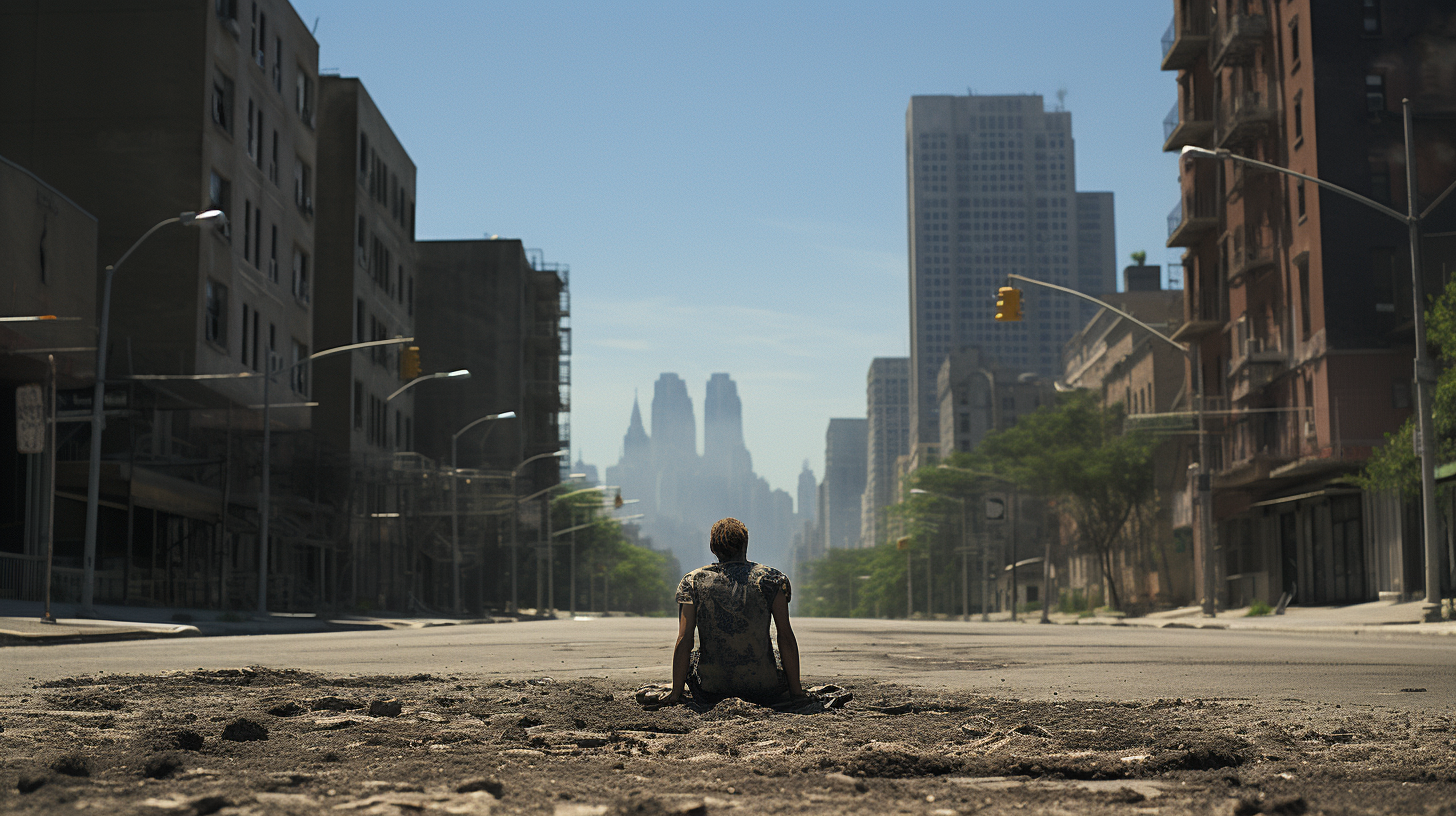In the heart of the city, a cathedral of commerce, where the synchronized symphony of human activity once echoed through the streets, there now lies an eerie stillness. The relentless onslaught of heatwaves has reduced the urban sprawl to a desolate hush. Out of sheer necessity, the citizens have retreated to the bowels of their dwellings, escaping the oppressive grip of a sun turned tyrant. The roads, once webbed with a ceaseless flow of vehicles, lay barren, their black tar mirroring the sky’s inferno.
Let us paint the picture of this scorched scenario in ‘The Sweltering Silence’, a world not unlike our own, but where nature’s unchecked temper boils our capitalist cauldrons until they can sing no more. What becomes of our proud cities when the pulse of productivity is forced into a heat-induced hibernation?
Imagine walking through the wasteland once known as downtown. The skyscrapers stand as tombstones, marking where the vibrancy of urban life lies interred beneath unrelenting heat. Their glass facades now serve only to amplify the sun’s cruelty, and the chatter of commerce is replaced by the solemn whisper of desiccated leaves skittering across the concrete.
It is here we confront the other side of our protagonist, the Relentless Summer, born from our chronic disregard for the environmental warnings trumpeted for decades. Cafés and bistros, which saw countless strategizing over mid-morning lattes, now serve as cooling shelters, vital havens for the heat-stricken few who dare venture out in daylight hours.
The scenes are reminiscent of our recently featured ‘Smothered Shores’ and ‘The Marooned Metropolis’, which portrayed our habitats reclaimed by rising seas and our failing urban infrastructures. Now, we grapple with a different brand of exile; a forced retreat into shadow as instituting nocturnal societies becomes a contemplated reality. Does this not beckon us to question—what essence of humanity survives when the cornerstones of civilization melt beneath the sun’s relentless stare?
In this heat-hammered dystopia, power grids falter under the demand for air conditioning, starkly opposing ‘The Marooned Metropolis’, where electricity was a victim of neglect and natural corrosion. Now, society’s lifeblood is siphoned by survival’s necessity, leaving hospitals and emergency services desperately grasping for power like parched throats for water.
The warped tracks and unmoving trains, relics from ‘The Urban Exodus’, tell a chilling story of abandon. Public transport—a linchpin of metropolitan efficiency—has ceded its reign to the tyranny of temperature. The din of engines and honks has been silenced; instead, the drone of emergency broadcasts and distant sirens fill the air, a haunting reminder of the struggle for life against nature’s unbounded furnace.
As dusk approaches, the hollow canyons of finance and governance whisper of resurgence. The night becomes a forbidden refuge, proffering a cooler embrace, allowing a flicker of human presence to dance within the tenebrous streets. This nocturnal rhythm births a surreal facet to our doomed existence, fashioning a routine turned noctambulant, while inadvertently giving the relentless sun its dark homage.
Indeed, ‘The Sweltering Silence’ stands as a vignette of a world caught in nature’s backlash, yet it is but a grim forecast painted with the brush of current neglect. The tales remind us of where we may be headed, but they aren’t mere forewarnings. They are a call—a pleader for introspection and action, for the heart of the city to beat again, not beneath the sweltering silence, but within the harmony of a balance restored.
